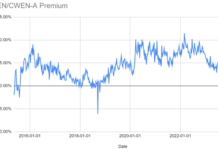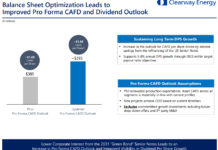by Tom Konrad CFA
Clean-energy stocks’ performance over the last couple of years proves that it’s possible to do well – sometimes very well – while doing good. Unfortunately, it’s also possible to lose a lot of money.
Case in point: solar installer SolarCity’s stock (SCTY) price has more than quintupled since its 2012 IPO, but has fallen 40% since the start of the year. Swings like these are just too wild for many investors to stomach.
So the news that California-based SolarCity launched the first public offering of solar bonds last week likely piqued the interest of sustainability-minded investors seeking more stability. But how do these bonds really stack up against other sustainable investment options?
SolarCity’s bonds, which are available to retail investors in all 50 states, represent energy projects across the country. They start at $1,000, mature in one to seven years, and pay up to 4% interest. Buyers face no price risk – unlike volatile stock values, the bonds pay a fixed amount – but the bonds are backed only by the company’s ability to pay.
This could be a problem for skittish investors: as the bonds are not currently traded on any market, investors will not be able to redeem or sell them if they suspect the company will have financial difficulties before the bonds mature. And given that SolarCity is itself only eight years old, investing in a seven-year bond could be a little unnerving.
While SolarCity’s bonds are a significant innovation, they are hardly the first green investment on the market. Aside from directly investing in companies via stock, there are clean-energy mutual funds, certificates of deposit (CDs) and even home improvements. As with all investments, these options involve tradeoffs between risk, liquidity and income.
With that in mind, here’s a look at the costs and benefits of five of the most promising green investment options:
Solar bonds
While SolarCity’s bonds are the first such product to be nationally registered, Mosaic has been offering very similar state-registered bonds in California and New York since April 2013. Like SolarCity’s bonds, Mosaic’s are not traded and must be held to maturity. However, they are available in smaller increments – the least expensive cost as little as $25 – and often offer higher interest rates. Most offerings have been priced to yield 4.5%, although they often have longer maturities as well.
Asked to comment on the differences between SolarCity and Mosaic’s offerings, Tim Newell, SolarCity’s vice president for financial products, highlighted the advantages of his product’s diversification: SolarCity’s bonds are being backed by the cash flows from its solar leases around the country.
In reality, this is both an advantage and a disadvantage. While SolarCity can draw on the income from a large number of solar leases to repay its bonds, none of these leases are specifically dedicated to repaying the retail bonds. For example, there is nothing to prevent SolarCity from using the cash flows from its existing leases to back new issues of commercial asset-backed bonds. The company has issued $327.1m of such bonds since November 2013.
For Mosaic’s bonds, on the other hand, the greatest weakness is their lack of availability. Currently, the site is not funding any projects or offering any new bonds, which means that interested investors are – currently, at least – out of luck. When Mosaic does have investments available, they sell out quickly. The new bonds from SolarCity may help fill the demand by providing an alternative.
Green CDs
The safest sustainable income investment remains a CD from a sustainable bank. Some of these banks are Certified B Corporations, which shows a commitment to the environment and promoting social good. Beneficial State Bank, Capital Pacific Bank, New Resource Bank and Virginia Community Capital Bank all offer FDIC-insured CDs.
But while CDs are safe, they come with a trade-off: income. As the chart below shows, the interest rates on CDs are anemic when compared to SolarCity bonds with similar maturities. Solar power systems
Solar power systems
One of the most reliable, consistent and non-volatile sustainable investments is a home solar power system. Like a more traditional income investment, a solar power system produces a monthly cash flow; of course, rather than putting money into your account, it works the opposite way – cutting expenses by reducing the cost of your utility bills. Even better, these savings don’t count as income, so they aren’t taxable.
To give a concrete example, I recently installed solar on my house in New York. Even assuming that electric rate increases are only enough to compensate for maintenance, the equivalent tax-free interest rate for the investment comes to approximately 11%. Improving a home’s energy efficiency can produce even higher returns, although those returns can be much harder to measure.
New York has excellent solar incentives and high electricity prices, but a solar installation in any state is likely to be a much better investment than SolarCity’s bonds. When Newell was asked to compare the interest rate on MyPower, the company’s solar loan program, he avoided the question, saying the two products were like “apples and oranges”.
His reluctance is understandable: SolarCity’s profits come from the difference between the rates at which it lends (or the embedded rates in its power purchase agreements) and the rates at which it borrows. It’s not diplomatic to highlight the large gap between them, especially when talking to small investors or potential customers.
Admittedly, the economic benefits of home solar are largely limited to homeowners. For renters and homeowners without suitable roofs, however, some states have passed legislation to enable community solar, also known as Solar Gardens. These are commercial scale solar farms in which local individuals can invest and get benefits similar to those of a solar system.
Preferred stock
Buying stock in green companies is one
of the most common types of sustainable income investments. But while these investments have recently produced very attractive returns, they’re highly volatile. To make matters worse, few clean energy stocks produce any income at all.
Preferred stocks, a hybrid between stocks and bonds, offer a bit more security. Holders have rights to a “preferred” dividend before common shareholders, but have fewer rights than bondholders in a bankruptcy.
One example of this is Power REIT (PW), a real estate investment trust that owns railway track and invests in the land under solar farms. The company’s Series A Preferred shares (PW-PA) yield 7.75% at $25 and trade on the NYSE MKT. Although they have a higher risk of loss than bonds, they also have a much higher yield – and can be held in an IRA. Perhaps best of all, they offer a much greater deal of freedom. Unlike bonds, which lock in purchasers, Power REIT’s preferred shares can be bought and sold on a daily basis.
Yieldcos
Yield-oriented companies, or “yieldcos” are designed to produce a stable cash flow by separating a company’s volatile day-to-day activities from its operating assets. Put another way, a company that is involved in generating energy could partially insulate its investors from risks caused by regulatory changes by sequestering its stable assets in a separate, income-generating business.
Over the last two years, seven yieldcos owning renewable energy and energy efficiency projects have listed on US markets. All can be traded and held in IRAs, but they’re more volatile than any of the investments listed above. Given the nature of their assets, most have lower risk of bankruptcy than SolarCity or Power REIT. The following chart shows 14 yieldcos and similar companies listed on US, Canadian, and UK stock exchanges.
Unlike other income investments, yieldcos have the potential to increase their dividends over time. All things being equal, this would also result in a higher stock price. The yieldco with the highest yield is currently Hannon Armstrong Sustainable Infrastructure (HASI) at 7.3%, followed by Brookfield Renewable Energy Partners (BEP), Pattern Energy Group (PEGI), Terraform Power (TERP), NRG Yield (NYLD), Abengoa Yield (ABY) and NextEra Energy Partners (NEP).
Ultimately, SolarCity’s new solar bonds fill an important niche in the sustainable investment market. They are easy to buy and have much higher interest rates than similar bank CDs; at the same time, they are also riskier and cannot yet be sold or held in self-directed retirement accounts.
On the other hand, they are safer (but have a lower yield) than preferred stocks and yieldcos. In this context, they’re ideal for small investors who cannot invest in clean energy for their own homes, or who want more solar income investments.
Tom Konrad is a freelance writer and portfolio manager specializing in clean energy and income investments.
Disclosure: Tom Konrad and his clients own shares of Power REIT (both common and preferred) as well as Hannon Armstrong, Brookfield Renewable Energy, Pattern Energy Group. He also has a short position in the shares of NRG Yield.
Disclosure: Tom Konrad and/or his clients have long positions in HASI, BEP, PW, PW-PA, and short positions in NYLD.
This article was first published on The Guardian, and is republished with permission. Further reprints require permission from The Guardian.








